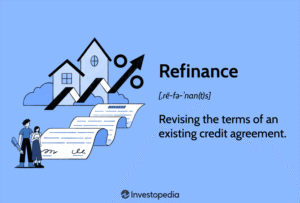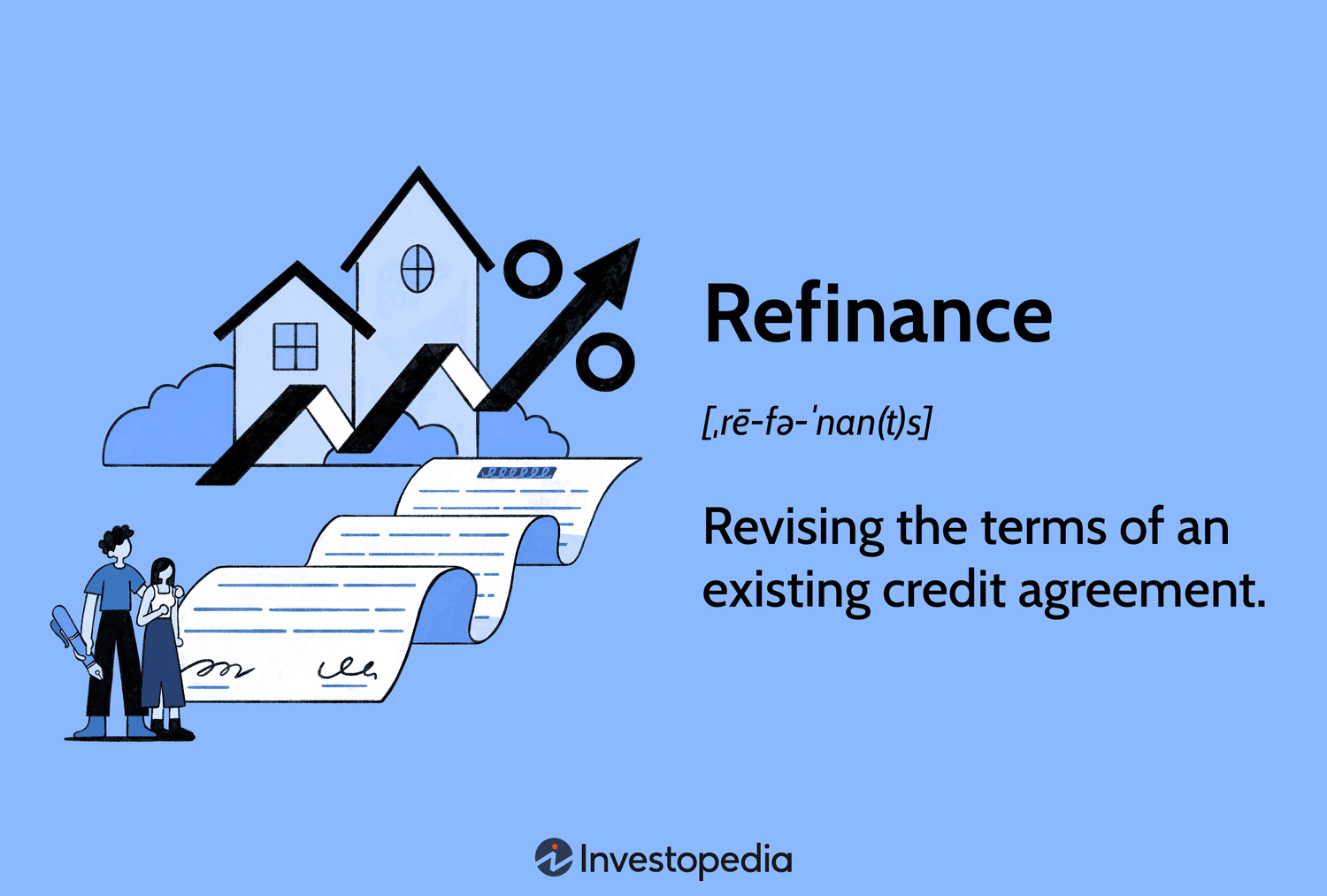Table of Contents
- 1 How to Refinance Your Mortgage with Low Interest in 2025
- 2 Understanding Mortgage Refinancing: What It Really Means
- 3 Why 2025 Is a Prime Year to Refinance
- 4 How to Prepare for Mortgage Refinancing
- 5 Finding the Lowest Interest Rates
- 6 Step-by-Step Mortgage Refinancing Process
- 7 Pros and Cons of Refinancing in 2025
- 8 Key Mistakes to Avoid When Refinancing
- 9 Final Thoughts: Should You Refinance Now?
- 10 FAQs on Mortgage Refinancing
- 11 Related Posts
How to Refinance Your Mortgage with Low Interest in 2025
Refinancing Your Mortgage in 2025: The Financial Move You Can’t Ignore
Refinancing your mortgage with low interest in 2025 is not just a smart option—it’s a powerful financial strategy. Whether your goal is to reduce monthly payments, shorten your loan term, or tap into built-up home equity, the current interest rate environment presents unique opportunities.

As global financial trends shift and the U.S. Federal Reserve adapts its rate policies, borrowers are poised to benefit—if they act wisely.
Refinancing is more than replacing an old loan with a new one. It’s about creating long-term savings, eliminating high-interest burdens, and restructuring your home finances. Let’s explore how to refinance your mortgage at the lowest possible interest rate—and make every dollar work harder.
Understanding Mortgage Refinancing: What It Really Means
Mortgage refinancing allows homeowners to take out a new loan—usually with better terms—to pay off their existing mortgage. You’re essentially swapping your old home loan for a new one, ideally with lower rates, more favorable conditions, or access to cash.
Common reasons people refinance include:
- Lowering the interest rate
- Reducing the loan term (e.g., 30 to 15 years)
- Switching from an adjustable-rate mortgage (ARM) to a fixed-rate mortgage
- Consolidating debt using home equity
- Accessing funds for large expenses (via cash-out refinancing)
This financial tool isn’t just for struggling homeowners. Even those with stable finances use refinancing to optimize their budgets and wealth-building strategies.
Why 2025 Is a Prime Year to Refinance
The 2025 housing market has rebounded from previous volatility. Many lenders are rolling out competitive low-interest mortgage options to attract qualified borrowers. According to Bankrate, the average 30-year fixed mortgage rate now floats between 6.00% and 6.25%, making this year ideal for refinancing—especially if your current rate is 7% or higher.
What’s driving this trend?
- A slowdown in inflation
- Stabilized economic growth
- Increased lender competition
- Rising home equity values
These elements combine to create a borrower-friendly market. Refinancing now can lead to substantial interest savings and improved loan terms.
How to Prepare for Mortgage Refinancing
Before applying, do a comprehensive self-check. Preparation not only increases approval chances but ensures you qualify for the lowest available interest rates.
1. Review Your Existing Mortgage
Understand:
- Remaining balance
- Current interest rate
- Term and type of loan
- Payment history and escrow balance
Gather these details to determine if refinancing will actually save you money.
2. Improve or Maintain Your Credit Score
Your credit score is a major factor in qualifying for low interest. Most lenders consider:
- 760+ as excellent
- 700+ as good
- 620–699 as fair
Use free tools like Credit Karma to monitor your credit. If needed, pay down debt, avoid new credit inquiries, and dispute inaccuracies to boost your score before applying.
3. Calculate Your Home’s Equity
Home equity is your ownership stake in the property. Lenders often require at least 20% equity to access the best refinance rates. Use sites like Zillow or get a real estate appraisal for an accurate valuation.
Finding the Lowest Interest Rates
The heart of refinancing is locking in a lower interest rate than what you currently pay. Here’s how to find the best one:
1. Compare Multiple Lenders
Don’t accept the first offer. Use platforms like LendingTree or NerdWallet to compare offers across banks, credit unions, and online lenders.
2. Understand Rate Types
- Fixed-rate: Set interest rate for the loan’s life—stable and predictable
- Adjustable-rate (ARM): Lower intro rates but risk increasing over time
- Hybrid: Fixed for a set period, then adjusts (e.g., 5/1 ARM)
In 2025, fixed rates are often recommended due to market unpredictability.
3. Lock Your Rate at the Right Time
Once you find a low rate, ask the lender to lock it in. Rate locks typically last 30–60 days, during which the lender guarantees the rate—even if the market fluctuates.
Step-by-Step Mortgage Refinancing Process
Step 1: Evaluate Your Goals
Ask yourself:
- Do I want to lower monthly payments?
- Am I trying to pay off my loan faster?
- Do I want to switch loan types?
Your goal determines the type of refinance you’ll choose—rate-and-term, cash-out, or streamline.
Step 2: Get Prequalified and Gather Documentation
You’ll need:
- Two months of pay stubs
- Two years of tax returns
- W-2 or 1099 forms
- Credit report
- Mortgage statements
This process helps the lender estimate your eligibility.
Step 3: Apply for the Loan
Choose a lender, submit your application, and prepare for underwriting. Your home will likely be appraised to determine its current market value.
Step 4: Close the Loan
Review your final loan terms, pay closing costs (2–5% of the loan), and sign the paperwork. Your new loan will pay off the existing mortgage and begin a fresh amortization schedule.
Pros and Cons of Refinancing in 2025
Pros:
- Lower interest and monthly payments
- Potential to pay off the mortgage faster
- Ability to consolidate high-interest debt
- Increased financial flexibility
Cons:
- Upfront closing costs
- Temporary dip in credit score
- Possible prepayment penalties
- Risk of resetting loan term
Always perform a break-even analysis to calculate when your savings will outweigh upfront costs. Use this formula:
Break-even = Total Closing Costs ÷ Monthly Savings
If you plan to live in your home past this break-even point, refinancing is usually worth it.
Key Mistakes to Avoid When Refinancing
- Not comparing enough lenders: Rates can vary widely
- Overestimating home equity: Inflated expectations delay approval
- Forgetting the break-even point: You may not save as much as expected
- Resetting to a 30-year term: More interest paid over time
Always review your loan estimate carefully and ask the lender about every fee before signing.
Final Thoughts: Should You Refinance Now?
Refinancing your mortgage with low interest in 2025 could be one of the smartest financial decisions you make this decade. The right refinance option, backed by solid preparation and a competitive interest rate, can bring down your monthly expenses, boost your equity faster, and save you tens of thousands over time.
Before making a move, assess your goals, compare offers, calculate long-term savings, and lock in a rate while the market is still favorable.
FAQs on Mortgage Refinancing
Q1: Can I refinance with a low credit score in 2025?
A: Yes, but you’ll likely face higher rates. FHA and VA refinance options may be more accessible for lower scores.
Q2: Is it worth refinancing for a 0.5% interest rate drop?
A: Yes—if your loan is large enough and you plan to stay in your home long enough to break even.
Q3: How soon can I refinance after buying a home?
A: Most lenders require 6 months, but some allow sooner if market conditions justify it.
Q4: Does refinancing require another home appraisal?
A: Usually yes, unless you’re eligible for a streamline refinance with FHA, VA, or USDA.
Q5: What are typical closing costs for refinancing?
A: Between 2% and 5% of the loan amount. These include lender fees, title insurance, and appraisal fees.
Q6: Will refinancing hurt my credit?
A: Slightly. Applying creates a hard inquiry, and a new account lowers your average age of credit.
Related Posts
- Top Credit Cards for Bad Credit with Instant Approval (2025 Update)
- Best Credit Cards for 2025: Maximize Rewards, Build Credit, and Save Money
- Best High CPM Ad Networks for Bloggers in 2025
- Top 20 Countries with Highest Google AdSense CPC for CRM in 2025
- Get Paid Testing Apps, Games & Surveys in the US & UK (2025 Guide)
- Best Life Insurance Plans for Families in 2025
- Why Are the Jewish So Wealthy? Secrets to Their Success

